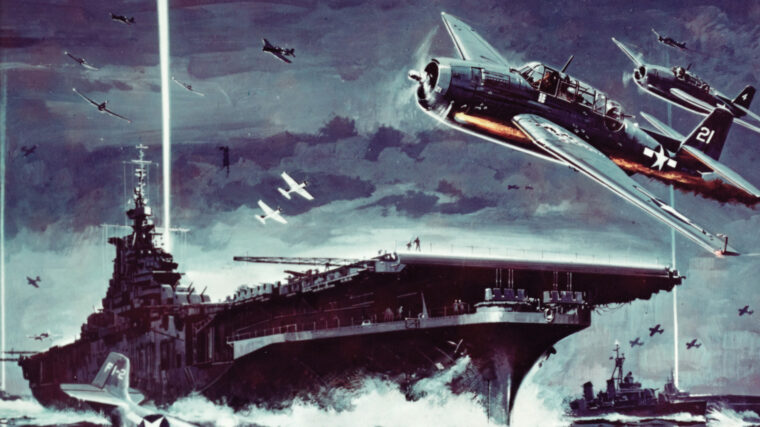
WWII
The “Tough ‘Ombres” of 90th ID Stand Tall at Mairy
By Christopher MiskimonAs summer neared its end in early September 1944, the U.S. Army raced across northern France toward the German border. Read more


WWII
As summer neared its end in early September 1944, the U.S. Army raced across northern France toward the German border. Read more

WWII
Few airplanes can claim the honor of being credited with changing the course of World War II, but the Douglas A-20 Havoc twin-engine light bomber is one that can. Read more

WWII
Erik Shilling, a pilot of the American Volunteer Group (AVG) Flying Tigers, faced the angry mob. There were about 30 of them, all in loincloths and leather vests with no buttons. Read more

WWII
For more than a century the Middle East was the British Empire’s vital link between the Mediterranean and India. Read more

WWII
In one of the most gripping scenes of the 1960 motion picture Sink the Bismarck! the viewer is witness to the climactic moment of the Battle of the Denmark Strait on May 24, 1941. Read more

WWII
As the winter of 1944-1945 slowly gave way to spring, the combined Allied armies ground their way into Germany. Read more

WWII
On May 2, 1942, the eve of the Battle of the Coral Sea, a Consolidated PBY-5A Catalina flying boat skimmed the water’s surface and touched down in the lagoon of Midway Atoll, 1,137 miles west of Oahu. Read more

WWII
At 12:30 PM, June 19, 1944, two vast fleets hundreds of miles apart faced off amid cobalt skies and burning seas. Read more

WWII
The evolution of the Nazi-era military wardrobe followed from a long history of European uniforms in general and Imperial German uniforms in particular. Read more

WWII
Norway had been able to avoid the massive bloodletting of World War I entirely and fervently hoped to steer clear of World War II as well through a policy of strict neutrality. Read more

WWII
The Battle of Savo Island, August 8-9, 1942, was the first major naval engagement of the Guadalcanal Campaign. Read more

WWII
On D-day, June 6, 1944, the British 3rd Infantry Division was the first to land on Sword Beach. Read more

WWII
Famed war correspondent Ernie Pyle reported in August 1944, that one of his favorite U.S. Army officers was a regimental colonel who shared Lt. Read more

WWII
The Cactus Air Force: Air War over Guadalcanal (Eric Hammel and John McKelvey Cleaver, Osprey Books, Oxford UK, 2022, 336 pp., Read more

WWII
Operation Market-Garden, British Field Marshal Bernard L. Montgomery’s imaginative and daring plan—reluctantly endorsed by his superior, General Dwight D. Read more

WWII
The night of July 29, 1945, was dark and clear over the Philippine Sea. A gibbous moon hung almost directly overhead, just a few days past full, casting its pale gray light over the dark waves. Read more

WWII
The Battle of Tarawa, a component of Operation Galvanic, was the U.S. Marines’ first bold amphibious assault against a Japanese stronghold in World War II. Read more

WWII
Chain Home, or ‘CH’ was the codename given to the system of early warning radar stations located along the Europe facing coasts of the United Kingdom (UK) before and during World War II to locate and follow aircraft. Read more

WWII
Columns of smoke rose above the skyline around a Tunisian farming complex on February 28, 1943, wafting past the late afternoon sun through atmosphere punctuated by the crack of bullets, booming explosions and the screams of wounded men. Read more

WWII
After the collapse of Mussolini’s fascist regime in July 1943, the allies launched a double attack against the western coast of the Italian mainland. Read more